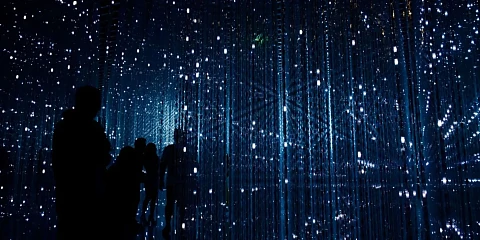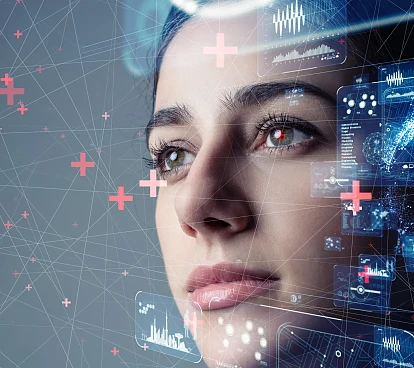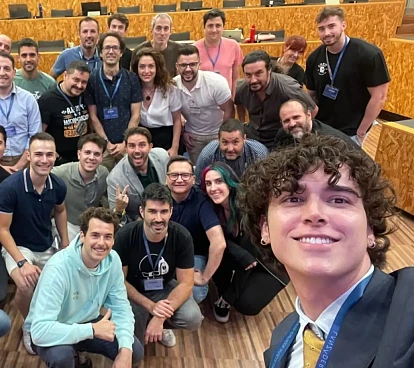
Museums: digitize or die
January 4, 2022
The vast majority of art produced throughout human history is analog, tangible, and perishable. For centuries, museums have acted as places where works of art are collected and displayed. They’ve brought art out of palaces, temples and the residences of the elite and made it accessible to more citizens.
This mission has not changed. But technology has transformed the way we consume culture. The emergence of new audiovisual formats and the spread of broadband internet connections has removed the need to travel to see a work of art. This has been a key factor in the digitization of museum catalogs in recent years.
The digitization of content could be seen as a supplementary activity to the actual mission: the acquisition, conservation, and exhibition of works in a physical location. This, like many other things, changed entirely during the Covid-19 pandemic, when institutions had no choice but to close. This meant that the digital transformation process for museums ceased to be optional and accelerated dramatically. And with good reason, since virtual visits to museums turned out to be one of the favorite pastimes during the pandemic. According to a survey conducted by Musement, 63% of Spaniards made a virtual visit to a museum or exhibition during the periods of lockdowns.
Museums seek to provide new digital experiences, more museums are moving towards a hybrid model in which virtuality is combined with a physical presence.
The truth is that digital transformation was something that was bound to happen sooner or later. But most museums have historically devoted a minimal fraction of their budgets to the process. According to data from the International Council of Museums, most museums barely spend a tenth of their budget on digital communication. At the same time, this transformation has not been homogeneous. Large museums have always had many more resources at their disposal than smaller museums and were the first to start including apps and QR codes in physical exhibitions. The digital experience has evolved through augmented reality and, eventually, to experiences like virtual tours, which remove the need of being at the museum altogether.
As mobility restrictions have relaxed and museums seek to provide new digital experiences, more museums are moving towards a hybrid model in which virtuality is combined with a physical presence.
Transformation and experience
When we talk about digital transformation in museums, we’ve identified two prevailing approaches. The first is a classic approach, where the transformation is strictly limited to digitizing catalogs and making these works available to the public through digital media. The second approach takes digitization and the digital transformation of the institution's internal processes into account, just like in other companies, and focuses on the experience that users have when interacting with the museum.
The Internet and the emergence of digital tools meant than museums could become content producers, not just content issuers
Experience is key here. Beyond digitizing catalogs and making them available to users, navigable from mobile devices, and offering context for each work, digital technology provides the possibility, for the first time, to expand and improve the way museums are experienced. This goes beyond virtual tours and creates entirely new digital experiences. In other words, the empowerment brought about by the Internet and digital tools means that museums can stop being simply content providers and become producers of digital content, adapting to how their audiences use mobile technologies. These users have gone from being mere spectators to actively interacting, and even becoming content creators through social networks, which, incidentally, have been the predominant means by which museums connected with the public during the confinement.
The shift from being content providers to digital content producers is not simply about applying technology. It requires a reflection on the type of storytelling museums want to do. And, although the possibilities of mixing different technologies to create new experiences are endless, it seems clear that it cannot be based simply on transferring the face-to-face experience to the digital one and vice versa. Catalogs uploaded to a museum's website, and virtual tours that emulate what a real visitor would do are no longer enough.
Opportunities and possibilities
Technology can be applied to the museum environment for the benefit of both users and institutions. For example, user data collected by big data tools and processed by artificial intelligence opens the door to offering users personalized experiences. In the museum field, artificial intelligence also has applications that we can also see in other sectors, such as chatbots, to answer people’s questions.
One of the challenges for museums in the 21st century is to compete with entertainment platforms without losing sight of their educational mission. Applying gamification can help present dense or difficult-to-understand content in a pleasant and digestible way. In this sense, museums can recover the concept of "edutainment" and take it to a new level. Augmented reality (AR) and virtual reality (VR) are two areas that are extremely useful for enriching face-to-face visits. AR experiences can be used to support gamification through simple apps or recreations of architectural and archaeological environments through our devices. VR experiences can be used similarly, but without the need of going to the museum physically.
A museum doesn’t even have to be a physical place. In 2021, the María José Jove Foundation created the MUV, the first virtual museum in Spain. It has an elaborate three-dimensional and immersive simulated environment that, given its nature, interacts with virtual visitors through interactive experiences that are impossible for real museums. The MUV follows in the footsteps of the VoMA (Virtual Online Museum of Art), the world's first virtual museum. It was created in 2020 by the artist Stuart Temple and goes far beyond the concept of virtual exhibition halls.
The possibilities are endless. While it’s true that a few years ago museums generally lacked well-defined digital transformation strategies, the trend is now clear and the approaches are increasingly diverse. The future is full of paths with challenges and opportunities. Museums have started to walk along some of these paths with more determination. At the same time, technology allows museums to create entirely new paths. Using technology creatively will be key to creating new solutions and experiences.
Our latest news
Interested in learning more about how we are constantly adapting to the new digital frontier?

Tech Insight
December 19, 2024
Contract Testing with Pact - The final cheetsheet

Insight
December 10, 2024
Groundbreaking technologies today that will reshape the innovation landscape in 2025

Insight
December 4, 2024
A Journey of Innovation, Improvement and Magic

Tech Insight
December 2, 2024
The European Accessibility Act (EAA): Towards a More Inclusive Digital Present